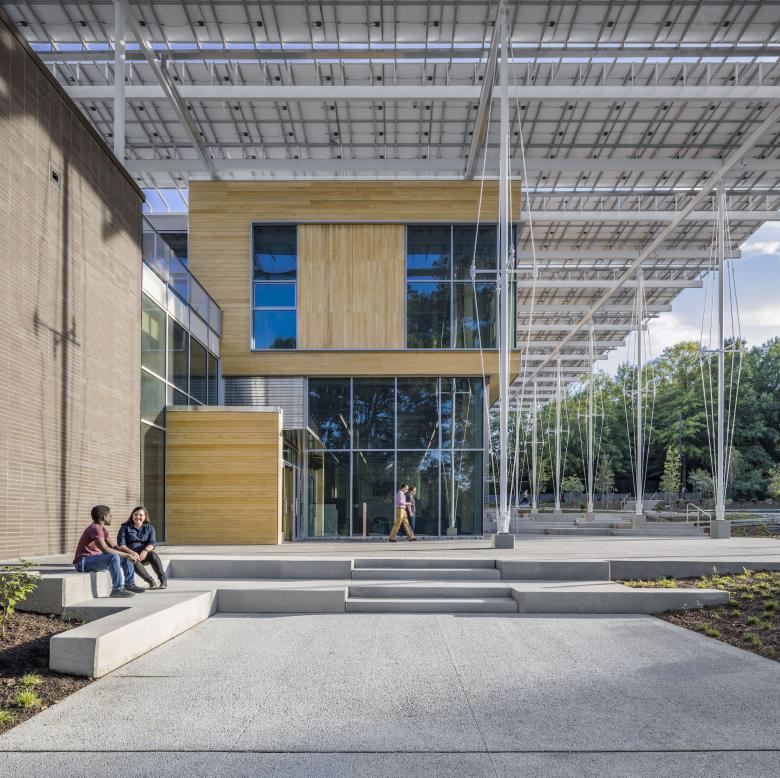Miller Hull Launches EMission Zero
John Hill
9. June 2021
The Kendeda Building at Georgia Tech, which recently earned Living Building Certification. (Photo: Jonathan Hillyer)
The Miller Hull Partnership, long a leader in green building, has launched EMission Zero, an initiative that aims to eliminate greenhouse gas emissions in buildings the Seattle-based firm designs.
Even though the buildings designed by the Miller Hull Partnership — such as the Bullitt Center in Seattle, considered the greenest office building in the world when it opened in 2013, and the Kendeda Building in Atlanta, which recently joined the Bullitt Center as one of the few fully Living Building Challenge-certified buildings in the world — are some of the most sustainable around, the firm asserts with EMission Zero "that more needs to be done and improved at a faster rate to avoid the worst effects caused by climate change." Things must be urgent when a champion of green building admits it isn't doing enough.
With its latest initiative, Miller Hull is focusing on four areas for addressing carbon emissions (quotes come from the firm's EMission Zero PDF):
- Design: Given Miller Hull's track record with green buildings that use little to no nonrenewable energy for their operation, this aspect is basically business-as-usual (as are Educate and Advocate). Nevertheless, it is worth pointing out that the firm "continues to work towards [Zero Energy] goals set out by the Architecture 2030 Challenge, as well as report our progress annually through the AIA Design Data Exchange."
- Educate: This aspect applies to future generations, through visits to elementary schools, mentoring high school students, and the firm's own Open Studio program, but it also involves participating in conferences and other speaking events to share knowledge with industry colleagues, and the use of Gap Analysis on every project "to communicate a range of environmental performance scenarios to our clients and demonstrate how their project can be improved to a regenerative design standard."
- Advocate: "Miller Hull supports, campaigns and advocates for equitable changes at any level of government that enforces stringent greenhouse gas emission requirements, including codes, carbon pricing and any other climate-related laws in the context of design and construction."
- Offset: Since 2006, Miller Hull has purchased carbon offsets "equivalent to our operational emissions" on an annual basis. With EMission Zero, the firm is extending this to the buildings they design, through a "commitment to purchasing Green-E certified carbon offsets upon each of our project’s construction completion," starting this year. The amount is based upon a whole building life cycle assessment and applies to upfront embodied carbon emissions. Mill Hull will buy the equivalent of one-third of that amount, encouraging the owner and contractor on each project to join them in offsetting the balance emissions.
EMission Zero is certainly commendable, in addition to being good PR for the firm, but its greatest potential is its applicability to other architecture firms. If "more needs to be done and improved at a faster rate," then hundreds or even thousands more firms in the US and beyond need to consider similar initiatives. Acknowledging this, Miller Hull has an EMission Zero FAQ (PDF link) that honestly lays out their approach and provides helpful links for everything from decarbonizing building operations to selecting carbon offsets.
